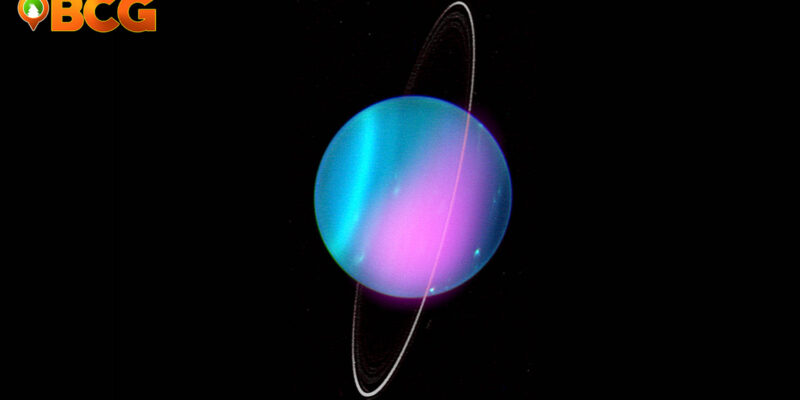Astronomers Detect the First X-Rays from Uranus
For the first time, X-ray emissions have been detected from Uranus, scientists revealed. The scientists used the Chandra X-ray Observatory of the National Aeronautics and Space Administration (NASA).
The study was published on Wednesday, March 31, 2021, wherein scientists examined three different Chandra x-ray observations of the ice giant planet, one in 2002 and two in 2017. Since Voyager 2 was the only spacecraft to ever reach the seventh planet in January 1986, astronomers could only rely on the Chandra and Hubble Space Telescope to examine the features of the cold planet.
In the study, scientists were able to detect X-rays from the first observation and a possible flare of x-rays from the 2017 observations.

Uranus captured by NASA’s Chandra X-ray Observatory
Related: NASA Captures Image of Big, Beautiful Blue Galaxy
Possible Sources of Uranus’ X-Rays
According to NASA, the sun is mainly the reason the “sideways planet” is emitting x-rays. But aside from that, the agency said that “there are tantalizing hints that at least one other source of X-rays is present,” and if these theories are confirmed, it would lead to further understanding of the planet.
The scientists are looking at the possibility that Uranus’ rings are producing X-rays themselves just like Saturn’s rings. The rings of Uranus could likely glow in X-rays due to charged particles colliding with the rings.
Another possible source of x-rays in Uranus is the planet’s auroras, a phenomenon similar to what we experience here on Earth. Auroras are colorful light shows caused by electrically-charged particles from the Sun colliding with gas particles in the Earth’s atmosphere. However, because of Uranus’ unusual spin axis and tilted magnetic field, it can cause its auroras to be unusually complex.
Further study is needed to examine these possible sources however, the current generation of X‐ray observatories does not provide sufficient data and would require help from ESA’s ATHENA OBSERVATORY or NASA’s nominal Lynx mission.
Related: NASA’s Perseverance Rover Drives on Mars for the First Time
Importance of the Study
According the the space agency, determining the planet’s sources of X-rays could help scientists find a better understanding on how exotic objects in space, such as black holes and neutron stars, emit X-rays.
















